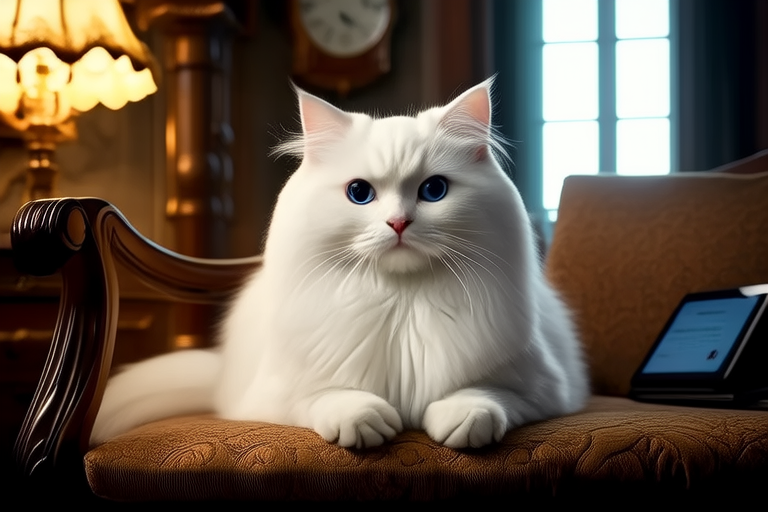From Royal Palaces to Modern Homes: The Journey of Persian Cats
Persian cats have long been admired for their elegance, grace, and luxurious appearance. These majestic felines have a rich history that dates back centuries, with their origins deeply rooted in the royal palaces of Persia, now known as Iran. Their journey from the exclusive company of nobility to becoming cherished pets in modern homes is a testament to their enduring charm and adaptability.
The Origins and Historical Significance
The exact origins of Persian cats remain somewhat shrouded in mystery, but it is widely believed that they first appeared in Persia, an ancient empire known for its opulence and grandeur. These cats were often depicted in art and literature, symbolizing wealth and status. The Persian cat’s striking features, including their long, flowing coat and expressive eyes, made them a favorite among the Persian aristocracy.
Their presence in royal palaces was not merely ornamental; these cats were also valued for their hunting skills, adept at catching rodents that could potentially damage valuable textiles and food stores. Their ability to maintain cleanliness and hygiene, combined with their docile and affectionate nature, further endeared them to their human companions.
Historically, Persian cats were highly sought after as gifts between monarchs and dignitaries, solidifying their status as symbols of prestige. Their presence in royal courts extended beyond Persia, reaching as far as Europe, where they were introduced by traders and diplomats. In these new lands, Persian cats continued to be revered for their beauty and poise, quickly becoming fixtures in the households of European nobility.
Physical Traits and Temperament
Persian cats are renowned for their distinct physical characteristics. They possess a robust, well-proportioned body covered in a thick, luxurious coat that requires regular grooming. Their faces are typically flattened, giving them a distinctive appearance that sets them apart from other breeds. Their large, expressive eyes are usually a striking blue color, though they can also come in other hues like green or copper.
Besides their physical attributes, Persian cats are celebrated for their gentle and calm demeanor. They are known to be affectionate towards their owners, seeking out companionship and comfort. This temperament, combined with their regal bearing, made them ideal companions for the often isolated and contemplative life of the royal court. Their quiet and composed nature also made them perfect for indoor living, a luxury afforded by their royal patrons.
The Evolution of Their Role in Society
The transition of Persian cats from the exclusive domain of royalty to the common household has been gradual yet significant. As trade routes expanded and communication between cultures became more frequent, Persian cats began to spread beyond the confines of royal palaces. By the 19th century, they had become popular pets among the upper classes in Europe and America.
During this period, there was a marked increase in the breeding of Persian cats, leading to the development of various sub-breeds. Breeders focused on enhancing the cats’ physical traits, such as the length and texture of their coats and the shape of their faces. This selective breeding not only preserved the breed’s unique characteristics but also created new variations that appealed to a broader audience.
The rise of mass media played a crucial role in popularizing Persian cats. Films, television shows, and advertisements often featured these elegant cats, showcasing their beauty and grace to a wider audience. This exposure helped to solidify their reputation as desirable pets, making them accessible to families beyond the elite. Additionally, the advent of pet care products and services catered specifically to Persian cats further facilitated their integration into everyday life.
Care Requirements for Persian Cats Today
Maintaining a Persian cat’s luxurious coat requires significant effort. Regular grooming is essential to prevent matting and tangles, which can lead to discomfort and health issues. Owners must commit to brushing their cats several times a week, using specialized tools designed to handle their dense fur. Bathing is also necessary, although it should be done sparingly to avoid stripping the natural oils from their skin.
Due to their flat faces, Persian cats are prone to respiratory issues and eye problems. Owners need to be vigilant about checking their cat’s breathing and keeping their eyes clean and free from discharge. Providing a safe, comfortable environment with minimal dust and allergens is crucial for maintaining their health.
Nutrition is another important aspect of caring for Persian cats. A balanced diet that meets their specific nutritional needs is vital for their overall well-being. Consultation with a veterinarian can help determine the best dietary options for your Persian cat, taking into account factors such as age, activity level, and any existing health conditions.
The Enduring Appeal of Persian Cats
Despite the challenges associated with their care, Persian cats continue to be highly sought after as family pets. Their timeless beauty and gentle nature make them appealing companions for people of all ages. The bond between a Persian cat and its owner is often described as deep and meaningful, offering a sense of companionship and comfort.
The enduring popularity of Persian cats can be attributed to their ability to adapt to changing times while retaining their core qualities. From the opulent courts of Persia to the cozy living rooms of modern homes, these cats have consistently captivated the hearts of those fortunate enough to share their lives. As society continues to evolve, so too will the role of Persian cats, ensuring their place in the hearts of cat lovers for generations to come.
In conclusion, the journey of Persian cats from royal palaces to modern homes is a story of adaptability, resilience, and enduring charm. Their transformation from exclusive companions of nobility to beloved pets reflects the universal appeal of these majestic creatures. With proper care and attention, Persian cats remain cherished members of many households, bridging the gap between past and present, and ensuring their legacy for years to come.
